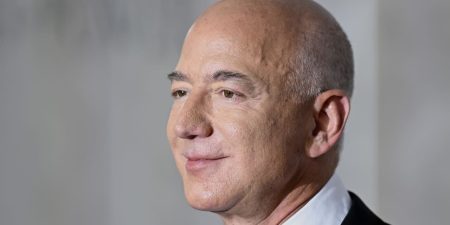Microsoft Corp. easily topped profit and revenue expectations for its latest quarter, though its shares were moving more than 3% lower in extended trading Tuesday after the company discussed the year ahead.
The technology giant has won favor on Wall Street for its positioning in the artificial-intelligence revolution, though Chief Financial Officer Amy Hood said on Tuesday’s earnings call that “even with strong demand and a leadership position,” Microsoft’s
MSFT,
“growth from our AI services will be gradual.” Microsoft’s AI for its Azure cloud-computing business needs to ramp, and the company is working toward the general availability of its Copilot productivity product.
Microsoft’s AI revenue impacts will thus be weighted toward the second half of the new fiscal year that just began, she continued. Meanwhile, she expects that Microsoft’s capital expenditures will rise sequentially each quarter “as we scale to meet demand signals.”
Hood’s commentary came as Microsoft posted fiscal fourth-quarter results Tuesday afternoon that showed a 15% jump in revenue for the company’s cloud-computing segment, which it calls Intelligent Cloud. Revenue for the segment came in at $24.0 billion, while analysts had been anticipating $23.8 billion. The growth rate was 17% on a currency-neutral basis.
The company said revenue for Azure and other cloud services was up 26%, or 27% in constant currency. Microsoft’s forecast had been for 26% to 27% in constant-currency Azure sales growth, while the company posted 31% constant-currency growth on the metric in the March period. The FactSet consensus was for 27% growth in constant currency.
“While we believe the Street was hoping for Azure growth more in the ~28% range, we believe the consumption part of the business held up well,” Evercore ISI analyst Kirk Materne said in a note to clients.
For the September quarter, Microsoft anticipates 25% to 26% in constant-currency Azure growth.
The cloud migration is still in the “early innings,” Chief Executive Satya Nadella said on the call, while also highlighting a “new world of AI driving a set of new workloads.”
“We think of that, again, being pretty expansive from a TAM [total addressable market] opportunity and we’ll play it out,” he continued, though the company is also up against the “law of large numbers” given the massive scale of its cloud business.
The company generated fiscal fourth-quarter net income of $20.1 billion, or $2.69 a share, compared with $16.7 billion, or $2.23 a share, in the year-earlier period. Analysts tracked by FactSet were modeling $2.55 a share.
Overall revenue for Microsoft climbed to $56.2 billion from $51.9 billion, whereas analysts had been expecting $55.5 billion.
See also: Microsoft bulls are excited as company reveals pricing for AI offering
Microsoft logged $18.3 billion in revenue for its productivity and business processes unit, up 10% from a year before, or up 12% in constant currency. That part of the business includes LinkedIn and both commercial and consumer versions of Office. Analysts had been looking for $18.1 billion.
Revenue for the More Personal Computing segment, which includes Windows and Xbox content and services, dropped 4% to $13.9 billion and was off 3% on a constant-currency basis. The FactSet consensus was for $13.6 billion.
Nadella, meanwhile, expressed optimism about the eventual opportunities brought upon by Microsoft’s Copilot offerings.
“I do think people are going to look at how can they complement their [operating-expense] spend with essentially these Copilots in order to drive more efficiency and, quite frankly, even reduce the burden and drudgery of work on their OpEx and their people and so on,” he said.
Evercore’s Materne called the overall results “solid” amid “a lot of macro headwinds.” Microsoft’s investment story “gets stronger in [the second half of the calendar year] as some optical headwinds reverse and [comparisons] soften, and Microsoft’s position in the enterprise market continues to get stronger as customers look to consolidate spending,” he wrote.
Read: Amazon finally is nearing a bottom on this key measure, analyst says
Read the full article here















